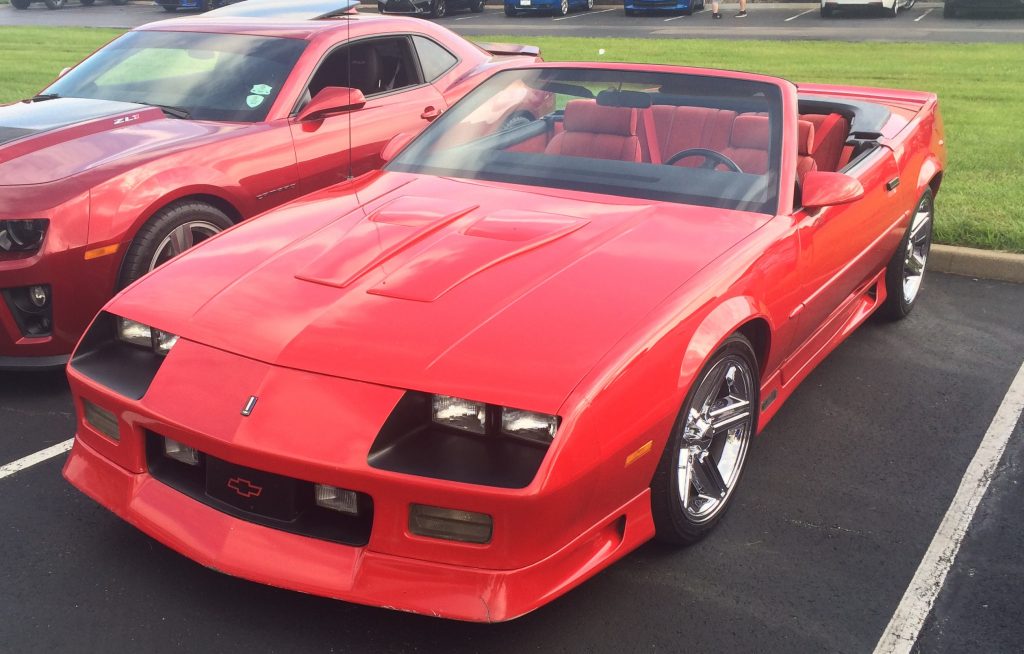You’ve got questions, we’ve got answers. We work with the Summit Racing tech department to help you tackle your auto-related conundrums. In this week’s Mailbag, we’re helping a reader solve a diesling problem where he can’t get his Camaro’s engine to shut off.
***
Q: I have a 3rd-Gen. Camaro with a 305 4-barrel. I am having problems getting the car to shut off. I have tried pulling the coil wire, and even removing the battery cable, but the engine keeps running until I choke off the carburetor. What is causing this?

A: This problem is known as dieseling. It can be caused by one of—or a combination of—the following conditions:
- Ignition timing is advanced too far. Not sure how to adjust your timing? Check out this video put together by our friends at MSD Ignition, and read Jeff Smith’s Ask Away! column about ignition advance.
- Idle speed set too high. You didn’t mention what specific type of carburetor you had, but check its service manual on idle speed adjustment. It’s often a simple matter of adjusting a set screw.
- A vacuum leak causing fast engine idle and letting excess air into the engine. This can be as basic as a loose or cracked hose, or it may require fixing a gasket leak in the carburetor or manifold. Smith addressed this topic as well in his Ask Away! column How to Identify Gasket Leaks and Fix Them.
- Excessive carbon buildup in the combustion chambers, which causes a “glow plug” effect. A fuel system additive or motor treatment may do the trick, but in extreme cases, you’ll have to remove your cylinder heads and physically remove the carbon buildup by hand.

Oil in the combustion chamber can cause run in too.
Although advancing timing raises an engine’s idle speed, it is the idle speed (butterflys open too much that causes the dieseling. To prove it, put a timing light on the engine when warmed up. Turn key off. As the engine diesels, you’ll not see any ignition pulse. It is air drawing fuel into the hot engine causing it to diesel. Lower your idle.
There’s a few good reasons for this problem, most of your answers were mentioned . What’s the engine temperature running at? Did you try to let the engine idle for a couple of minutes before shutting it down? The main reason they call it” Dieseling” because it’s running off heat in the Combustion Chamber,Which could be caused by excessive carbon build up.
Old School Trick:::::* With the engine running, At full Operating Temperature, take off the Air Cleaner assembly (plug all open vacuum lines) Bring the engine’s RPM’s up to @ 2000-2500 RPM’s.Let it run for @ 5-10 minutes at that speed,Then…you want to drop cold water(droplets) into the primary barrels (slowly) alternating between the two.
{I use an old dish detergent bottle, works perfect} You might have to do this procedure a couple off time’s. The cold droplets hitting the hot carbon actually breaks up the carbon, I’ve done this many times with great results. Also check the catalytic converter to see if it’s blocked, that’s easy enough to do also. Just drive the car around for a while (preferably nighttime) drive it up on ramps and look under at the engine pipes,If there RED HOT your CAT’s blocked or starting too. Hopefully this information was useful to you. Good luck!
MOTORHEAD~TY
I agree with Ty, be careful to add the water in small amounts/drops, the water will help to clean the combustion chambers.
If this is a stock 305cid. with a 4bbl. Rochester carb. It probably has a anti-dieseling solenoid. There are 2 adjustments that have to be made. With the engine warmed up and idling, disconnect the solenoid wire and check the idle speed, it should be around 500 rpm. Reconnect the wire and adjust the solenoid to the suggested idle speed usually displayed on the factory spec sticker on the radiator cover (unless it has been lost or discarded, for some reason). If the engine idle at the solenoid is about 600 -625 rpm when the key is shut off the solenoid retracts to the carb screw idle setting of 500 rpm and the engine will usually shut off with no problems. This is all predicated on the assumption that this is a stock setup, and the anti-dieseling solenoid is still present.
I second the opinion by mark on the anti-dieseling solenoid.But if you feel the need to dump fluid down your carb into the motor use gumout carb cleaner not water.
I have 95 s10 blazer with 4.3 on edelbrock carburetor 1404 the car won’t shut off and stumble few times than it will die this truck used to be cpi fuel system I have changed everything to stock due cpi system has been messed with by someone else and did everything I can to get it right but decided to go full stock so I am deaf and I can get it start and run but tried adjusting idle seed with timing light and vacuum gauge but can’t it’s to shut off without the stumbling any way to fix this please help
My 1986 Chevy pickup has a vacuum-operated part which “shorts out” the airflow going through the carb, when the key is turned to off, thus killing the air flow which supports the dieseling.